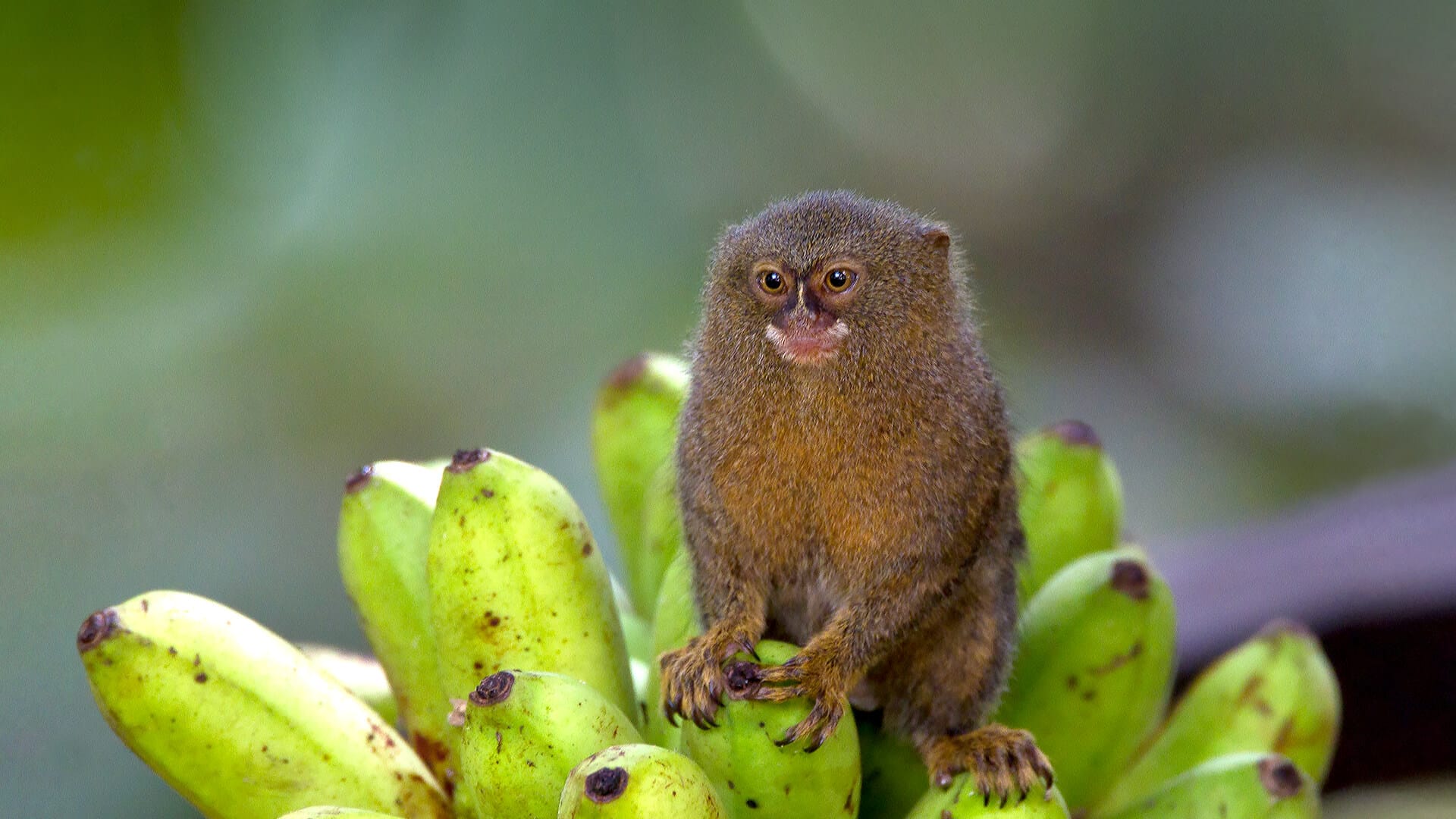Picture this: a miniature monkey with fur as radiant as a silver dollar, effortlessly bouncing through the vibrant emerald canopy of the Brazilian Amazon. This is the silvery marmoset, a captivating little primate that calls this lush paradise home. Let’s journey into their world and discover what makes these creatures so special, from their remarkable adaptations and vocal family groups to the challenges they face and the inspiring efforts to safeguard their future.
Tiny but Mighty: A Closer Look
The first thing you’ll notice about silvery marmosets is their stunning silvery-white fur, starkly contrasting their black tails. These diminutive primates only reach about 7 to 11 inches long – shorter than a standard ruler! But don’t let their size fool you; they are incredibly agile. Thanks to their long back legs and strong, prehensile tail, they navigate the trees with astonishing grace, making those leaps between branches appear effortless.
Gum-Loving Gourmets: Their Fascinating Diet
Here’s where things get really interesting: silvery marmosets are gumivores, meaning they have a particular fondness for tree sap. They possess specialized teeth designed for gnawing on bark, which encourages the trees to release their viscous, sweet sap. This sticky treat is their primary food source. However, they also enjoy a diverse diet of insects, fruits, and even the occasional small animal, showcasing their adventurous palates.
Want to learn more about the intricacies of their diet and its impact on their rainforest home? Dive into our comprehensive guide on what silvery marmosets eat.
Family Matters: Chatty Groups and Devoted Parents
Silvery marmosets are all about family. They live in tight-knit groups, typically led by a dominant pair, much like the heads of a household. And are they a vocal bunch! They communicate through a variety of sounds, including chirps, trills, and whistles. Impressively, they can even recognize each other’s calls amidst the dense rainforest – a testament to their remarkable vocal abilities.
When it comes to raising a family, both parents share the responsibility of caring for their young. Silvery marmoset mothers usually give birth to twins, a characteristic that adds to the charm of these captivating creatures. Sadly, in the wild, these monkeys have an average lifespan of about 10 years.
Facing the Future: Challenges and Hope
Unfortunately, like many inhabitants of the Amazon, silvery marmosets are confronting significant challenges. Deforestation, habitat loss, and the illegal pet trade are all major threats to their survival. As their rainforest home shrinks, these small primates are finding it increasingly difficult to thrive.
The good news is that dedicated individuals and organizations are working tirelessly to protect these animals and their delicate rainforest habitat. Conservation efforts include establishing protected areas, conducting research to better understand their needs, and educating people about the importance of safeguarding these amazing creatures. By working together, we can help ensure that these charismatic, silver-furred acrobats continue to leap through the Amazon for generations to come.
Are you curious about the silvery marmoset’s conservation status and the ongoing efforts to protect them? Explore more about their uncertain future and how you can help here.
Unraveling the Truth: Are Silvery Marmosets Monkeys?
You bet they are! Those endearing silvery marmosets, with their gleaming fur and spirited antics, are undoubtedly members of the monkey family. They might be petite, but they are primates just like their larger monkey relatives. They are classified as New World monkeys, meaning they are native to the Americas, unlike Old World monkeys that inhabit Africa and Asia.
For a deeper dive into their classification, features, and the fascinating adaptations that make them unique, check out our detailed exploration of silvery marmosets and their place in the primate family tree
Key Points About Silvery Marmosets:
- Physical Attributes:
- Striking silvery-white fur
- Small size (7-11 inches long)
- Agile and graceful movement, aided by long back legs and a prehensile tail
- Diet:
- Primarily gumivores, relying heavily on tree sap
- Supplement their diet with insects, fruits, and the occasional small animal
- Social Behavior:
- Inhabit close-knit family groups led by a dominant pair
- Highly vocal, communicating through a range of chirps, trills, and whistles
- Reproduction:
- Mothers typically give birth to twins
- Both parents actively participate in raising their offspring
- Lifespan:
- Average lifespan of approximately 10 years in the wild
- Environmental Challenges:
- Face significant threats from deforestation, habitat loss, and the illegal pet trade
- Conservation Efforts:
- Conservationists are actively working to protect them through habitat preservation, research, and public education
By understanding the unique characteristics, challenges, and the conservation efforts surrounding silvery marmosets, we can contribute to a future where these captivating creatures continue to thrive in their Amazonian home.
- Unlock Elemental 2 Secrets: Actionable Insights Now - April 2, 2025
- Lot’s Wife’s Name: Unveiling the Mystery of Sodom’s Fall - April 2, 2025
- Photocell Sensors: A Complete Guide for Selection and Implementation - April 2, 2025

















1 thought on “Silvery Marmoset Facts: Diet, Habitat, & Pictures”
Comments are closed.